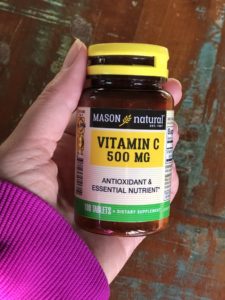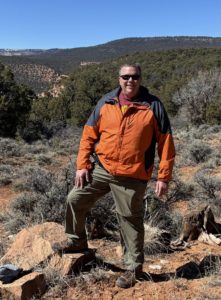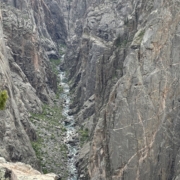How to Avoid Altitude Sickness
A Breath of Fresh Air: Navigating Altitude on Your First Visit to the Grand Valley including Grand Junction, Fruita and Palisade, Colorado

Driving through the tunnel
Before you travel to Colorado, know how to avoid altitude sickness. Embarking on your maiden voyage to the breathtaking landscapes of Grand Junction, Colorado, promises a feast for the eyes and a retreat for the soul. However, the higher altitude of this enchanting destination comes with its own set of challenges. Particularly the risk of altitude sickness for those arriving from lower elevations. This information will be useful to know before you head out on any side trips. Read my post about the Top Day Trips from Grand Junction for some fun places to go. I add tips based on my experience.
The Grand Valley sits at 4,646’ above sea level at the valley floor and it just goes up from there. This region has the lowest elevation in Colorado because of the Colorado River.
For instance, the first time I flew into Denver and rented a car to drive I-70 to Grand Junction I felt sick. I started to feel queasy after I crossed over the Continental Divide through the Eisenhower Tunnel.
My wife and I pulled into a gas station in Silverthorne looking for some altitude sickness relief. We found a two-pack of pills for $5.99. After taking them, I looked on the back of the package. Oddly, I was amazed to find out it was nothing but a vitamin C supplement. Regardless, a half hour later we both started feeling better. We quickly learned a key tip on how to avoid altitude sickness!

Consider taking Vitamin C before you travel. Check with your doctor.
In our numerous trips visiting Grand Junction before moving here, we started amping up the vitamin C and water intake a few days prior and haven’t really had any further issues. Oh, and always carry snacks, like a bag of mixed nuts. Eat those if you start to feel sick, even if you aren’t hungry.
If you haven’t driven here before, you will love the signs as you enter a new city. In Minnesota the signs included the size of the population, but not here in the rocky mountains, the city signs include the altitude and when you hit the peak, or a “pass” the elevation of the pass has a special sign so you can tell your friends back home how high up you were.
If you have concerns, fear not! Here’s a guide to avoiding and managing altitude sickness, ensuring a smooth and enjoyable experience in and around Grand Junction.
- Acclimatize Gradually
Ease into your Grand Junction adventure by arriving a day or two before diving into strenuous activities. Give your body the time it needs to acclimatize to the higher altitude, reducing the risk of altitude sickness.
- Stay Hydrated

Our YETI Stainless Steel Reusable Water Bottles are also dishwasher safe
Grand Junction’s elevated atmosphere can be deceptively dry. Stay ahead of dehydration by drinking plenty of water. Minimize alcohol and caffeine intake, as they contribute to dehydration. See my post about the water bottles we love, why, and where to get them.
- Avoid Overexertion
Resist the urge to conquer the heights immediately. Take it slow during your first day or two, especially if you’re not accustomed to the altitude. Keep in mind, strenuous activities can wait until your body is acclimated.
- Eat Lightly
High-altitude can affect digestion. Opt for light, easily digestible meals, and steer clear of heavy, greasy, or spicy foods that might exacerbate altitude sickness symptoms.
- Medications
Over-the-counter medications like ibuprofen or aspirin can alleviate altitude sickness symptoms. If necessary, consult a healthcare provider before your journey for guidance on prescription medications.
- Altitude Sickness Medications
Consider medications like Acetazolamide (Diamox) under the guidance of a healthcare professional. This medication can aid in preventing and treating altitude sickness, offering an extra layer of precaution.
- Stay Warm
Layer up to combat temperature fluctuations common at higher elevations. Shield yourself from wind and cold to minimize stress on your body, enhancing your overall comfort. If you go up to the Grand Mesa, that’s over 10,000’ in elevation.
- Descend if Symptoms Worsen
Should symptoms of altitude sickness intensify, descend to a lower elevation immediately. If problems persist, seek medical attention promptly.
- Oxygen
Some accommodations and clinics in high-altitude areas provide supplemental oxygen. Avail yourself of this option if altitude sickness becomes challenging to manage. Occasionally, we saw oxygen available for purchase when we visited Telluride in the San Juan mountains.
- Consult a Healthcare Professional
If pre-existing medical conditions raise concerns about your ability to handle high altitudes, consult a healthcare provider before your trip. Their personalized advice ensures a safer journey.
- Know the Symptoms
Familiarize yourself with the signs of altitude sickness—headache, nausea, dizziness, and shortness of breath. Early recognition empowers you to take corrective action before symptoms escalate.
- Watch for AMS
Acute Mountain Sickness (AMS) is a common form of altitude sickness that can manifest at elevations as low as 8,000 feet. Take AMS symptoms seriously and respond promptly to ensure your well-being.
Remember, altitude sickness doesn’t discriminate based on age or fitness level. I’ve seen very young fit people ignore these recommendations and experience flu like symptoms after thinking it would never affect them.
With these proactive measures, you can confidently navigate the higher elevation of living in Grand Junction, Fruita and Palisade ensuring your visit is not only safe but also a truly memorable experience.

Happy travels!
Connect with me on LinkedIn
Call/text me with your questions! 612-306-9558
Paul Aspelin, REALTOR®
GRI, SRES®, CNE
Your Grand Junction Real Estate Expert serving Mesa County
© 2023 Paul Aspelin, REALTOR® MovetoGrandJunction.com. Copyright protected. All Rights Reserved.












Trackbacks & Pingbacks
[…] The valley is a visual feast, offering a diverse landscape within a short drive. From the high desert red rock monolith formations to the alpine feel of the Grand Mesa and the classic Colorado mountains. The region captivates with its varied beauty, all within a 45-minute radius. You can literally ski at Powderhorn Mountain Resort in the morning and drive back down into the Grand Valley for a game of afternoon golf. How cool is that! The change in elevation makes a big difference. Check out my post on how to avoid altitude sickness. […]
Comments are closed.